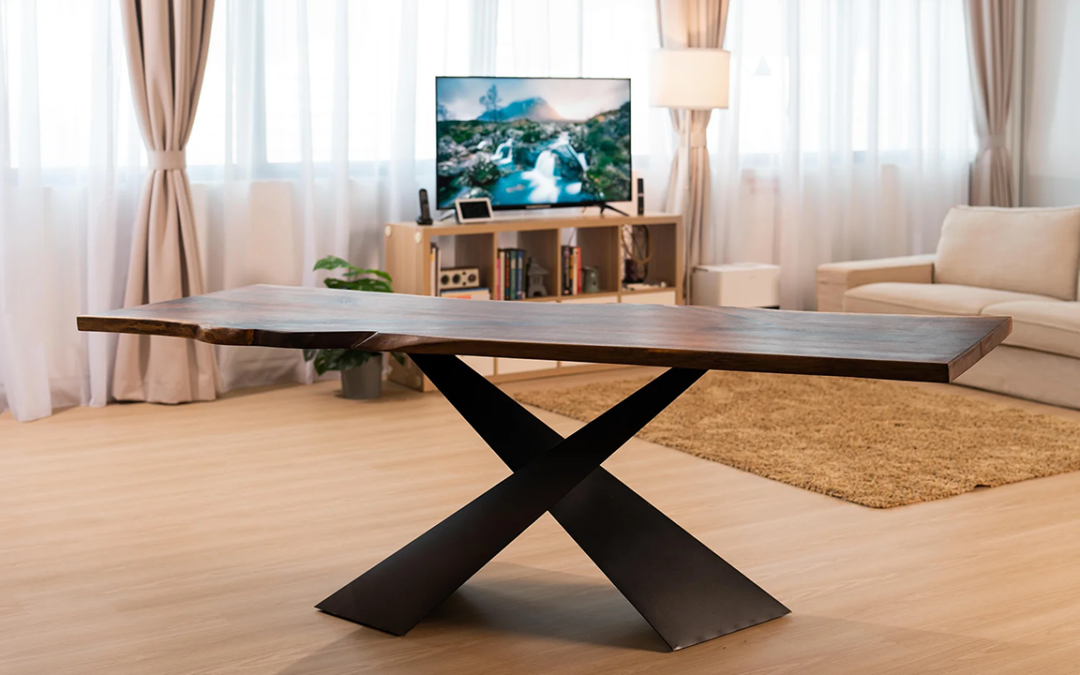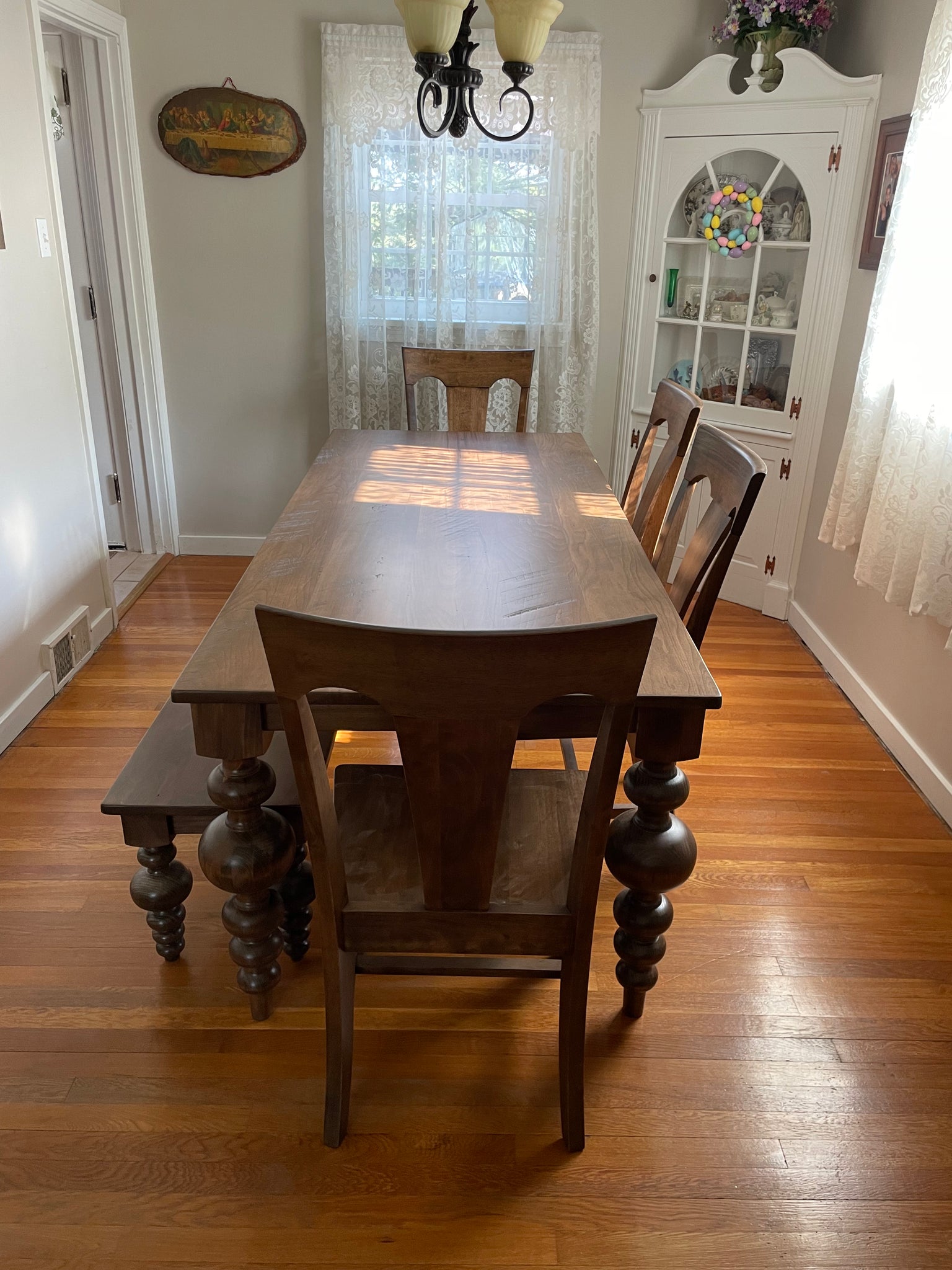Discovering Different Layouts for Dining Room Table Legs to Match Your Visual
Discovering Different Layouts for Dining Room Table Legs to Match Your Visual
Blog Article
Picking the Perfect Dining Table: What Styles Job Best for Your Home?
Selecting the optimal eating table for your home can be a nuanced process that balances appearances and functionality. To navigate these options properly and find a table that genuinely enhances your home, consider the following elements in detail.
Examining Your Room
Examining the dimensions and layout of your dining area is a critical primary step in choosing the perfect eating table. Begin by gauging the size and size of the area, accounting for doorways, windows, and other architectural functions that might influence table placement. This makes sure that your table not just fits however likewise permits comfy motion around it.
Take into consideration the variety of individuals you normally delight. A table needs to suit your house's day-to-day demands while supplying adequate versatility for occasional guests. As a rule of thumb, designate a minimum of 24 inches of table width per individual to ensure a comfy eating experience.
It's likewise necessary to maintain ideal clearance around the table. Preferably, there should go to the very least 36 inches between the table edge and wall surfaces or various other furniture, enabling easy accessibility and activity. For areas where chairs with arms or extra storage devices like buffets are entailed, boosting this clearance to 48 inches is recommended.
Lighting and ambience play considerable functions also. Make sure that your dining table straightens with existing illumination components or plan for adequate lights services. This comprehensive spatial analysis guarantees that your eating table not only fits literally yet additionally balances with your room's total functionality and visual.
Popular Table Styles

Standard table commonly include luxuriant information, bent legs, and abundant wood finishes, stimulating a feeling of ageless sophistication. They are best for homes with timeless decoration or those seeking to add a touch of sophistication to their eating location.
Modern dining tables prioritize simpleness and tidy lines, commonly integrating materials like glass and metal. These tables are excellent for modern areas, providing a streamlined and minimalist appearance that matches minimalist layout approaches.
Rustic table, on the various other hand, highlight natural products and a handcrafted appearance - dining room table legs. They frequently include reclaimed wood and a troubled coating, developing a cozy and inviting environment. These tables work well in farmhouse-style homes or those looking for a comfortable, natural feel
Industrial dining tables integrate resources such as steel and timber, often showcasing an utilitarian visual. This style is appropriate for lofts or city spaces, including a touch of tough appeal and toughness to the dining experience.
Each design uses distinct benefits, making it vital to choose one that straightens with your home's total design and your individual preferences.
Material Choices
When selecting a table, the choice of product plays an important duty in figuring out both the table's aesthetics and functionality. Wood, steel, glass, and composite products each offer distinct advantages and obstacles, making it vital to align the material with your home's design and way of life requirements.
Wood is a redirected here timeless and versatile alternative, available in ranges such as oak, walnut, and mahogany. Known for its longevity and warmth, wood matches both standard and modern interiors. It requires regular upkeep to avoid scratches and bending.
Metal tables, usually crafted from stainless steel, aluminum, or wrought iron, are commended for their modern charm and toughness. They are especially matched for industrial or minimal setups but can be susceptible to dents and may really feel chilly to the touch.
Glass table bring an air of sophistication and visibility, ideal for smaller rooms as they develop an illusion of more area. While simple to clean, glass can be prone to spots and requires mindful managing to avoid chips and splits.
Composite products, such as MDF and plywood, offer cost-effective and adjustable services, though they may lack the long life of all-natural materials. Choosing the right material guarantees your table is both a practical asset and a visual joy.
Sizes And Shape Considerations
After establishing the suitable product for your dining table, the next consideration is choosing the right shape and dimension to suit your room. Conversely, rounded tables cultivate a feeling of affection and are outstanding for smaller sized dining areas, urging conversation by getting rid of edges and making everybody really feel just as consisted of.
Size is just as important and need to be dictated by both the room's measurements and the variety of people you prepare to seat regularly. Generally of thumb, allot at the very least 24 inches of table width per individual to make certain comfy dining. Furthermore, think about the table's clearance room: there should be at least 36 inches between the table side and the wall surfaces or various other furniture. This makes certain that restaurants can move quickly without feeling cramped. Prolonging tables provide versatility if you description regularly hold larger gatherings, offering added seats when required without occupying additional space daily. Selecting the best sizes and shape makes sure both usefulness and aesthetic harmony in your dining area.
Matching Your Design
Picking a dining table that integrates with your existing decor is essential in creating a cohesive and welcoming room. A smooth, minimal table with tidy lines is optimal for a modern-day home, while a vintage, ornate table fits an extra conventional setup.
If your style includes warm redirected here tones and natural materials, think about a wood table to boost the natural feeling. On the other hand, a glass or steel table might be extra appropriate in a space dominated by amazing shades and commercial aspects.
Texture plays a crucial role. A rough-hewn, reclaimed wood table can add personality to a rustic room, while a refined marble surface can raise an extravagant eating area. Lastly, think about the scale and proportion of the table in connection with the room dimension and existing furnishings. A well-matched table not just improves visual appeal however also enriches the total eating experience.

Conclusion
Choosing the excellent dining table requires cautious factor to consider of room, style, products, form, and dimension (dining room table legs). Traditional tables complement traditional insides with abundant timber coatings, while modern-day tables suit modern setups via glass and steel. Rustic designs introduce warmth through natural materials, and industrial styles boost urban atmospheres with raw aspects. Integrating the table with existing style ensures both functionality and visual appeal, adding to a natural and cosmetically pleasing eating location.
Report this page